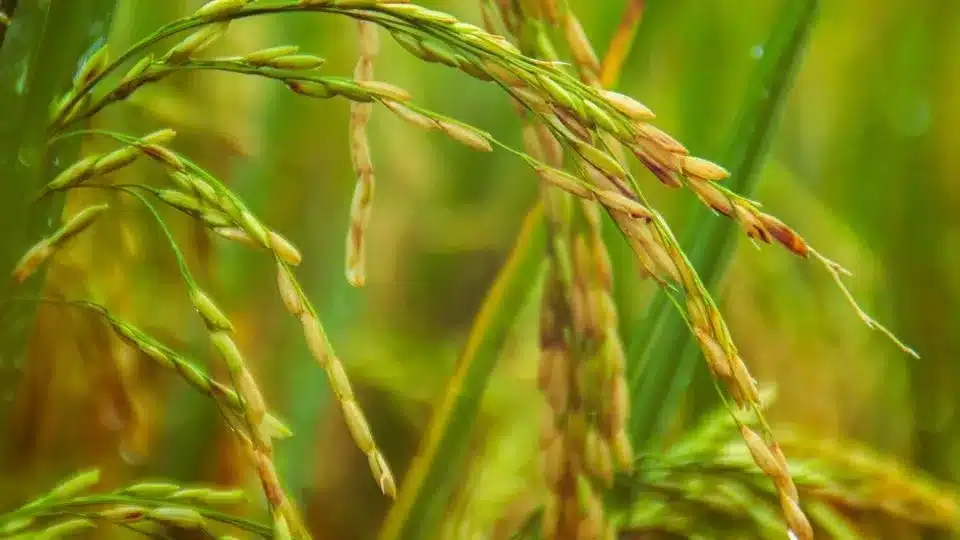Tags
Bago Flooding Has Deepened Myanmar’s Rice Crisis, Farmers Say
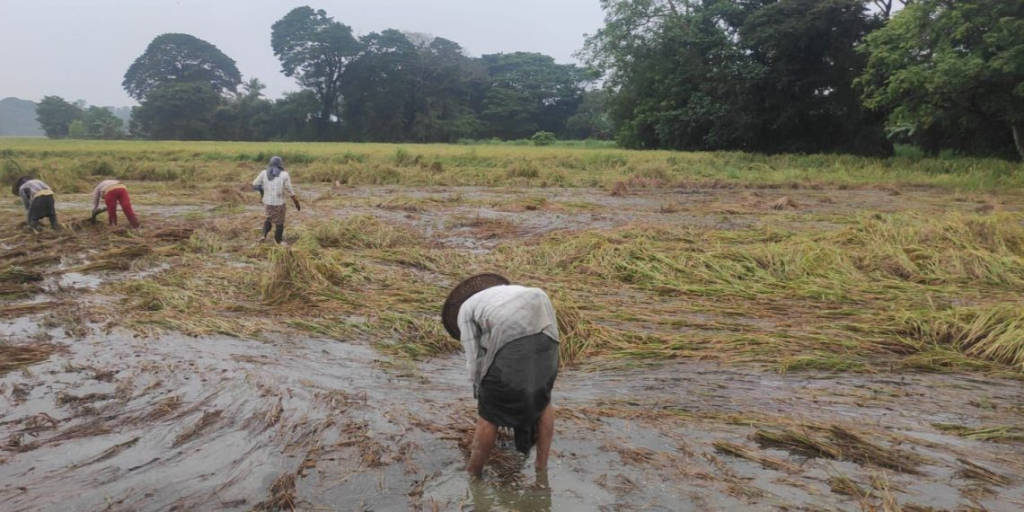
Farmers in Myanmar’s second-largest rice growing region, Bago, are seeing massive losses in yields due to the worst flooding to hit the region in six decades, raising concerns about mounting food security and dwindling export earnings in the coming months, rice traders and farmers say.
“All the paddy we grew rotted or was damaged,” a farmer in Bago Township said.
U Maung Maung, a farmer in Waw Township with 10 acres of paddy fields, lost his entire harvest. The flood wiped away all his ripened crop and left piles of mud on his fields.
“Even my family has no rice to eat now. We are living in a [displacement] camp and eating what is donated by volunteer teams,” he explained.
The Myanmar Rice Federation (MRF) said about 100,000 acres of rice fields in Bago Region were damaged by flooding as farmers were preparing for the monsoon harvest, local media reported, quoting U Aung Myint, the chair of the federation’s Bago District subcommittee.
Rice fields were flooded in Bago, Daik U, Kawa, Kyauktaga, Nyaunglaybin, Shwe Kyin, Thanatpin, and Waw, townships were flooded, farmers said.
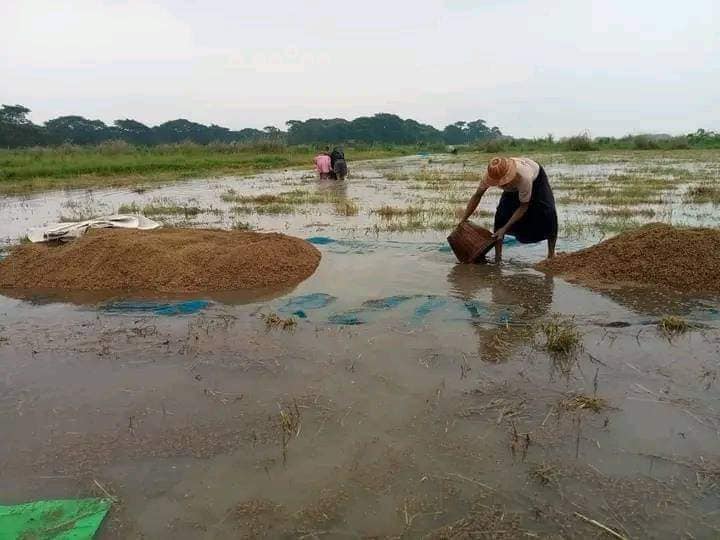
About 40 percent of the more than 260,000 acres of monsoon rice fields in Bago Region were damaged or destroyed by flooding this year, according to the MRF.
Farmers in the region said that the flooding not only damaged rice fields, it also destroyed storage facilities, seeds, other crops and fertilizer. In some areas, farmers said their fields were destroyed due to excessive amounts of chemical fertilizer that floods swept from storage facilities and deposited in fields.
Bago Region produces about 2.5 million tons of rice a year on average—about the total that Myanmar annually exports, according to the figures from the Asian Disaster Preparedness Center (ADPC), MRF and farmers.
Myanmar exported 2.261 million tons of rice and broken rice in the fiscal year to March with an estimated value of US$ 853 million. China, Belgium, Bangladesh and the Philippines have been the main export markets for Myanmar rice.
This year’s flooding in Bago Region has compounded a post-coup decline in rice cultivation and yields, according to the ADPC. Rice production in Myanmar fell 6 percent last year from 2021, it said. It also found that the amount of land used for deep-water rice—which can survive flooding—fell from about 44,200 hectares in 2021 to about 35,000 acres in 2022 in Bago Region.
In Bago Region, rice production fell from 2.835 million tons 2021 to 2.393 million tons last year—down 16 from the previous year, the ADPC said in February.
Farmers in the region say they are not getting support from the junta or other responsible bodies. They say they need rice seeds, fertilizer, fuel and financial support to grow rice as well as fair prices to sell it at.
The junta-led government of Bago Region announced that over 87,000 acres of monsoon rice cultivation in Bago Region was flooded this month, adding that more than 30,000 acres were damaged and over 4,000 acres of rice were destroyed.
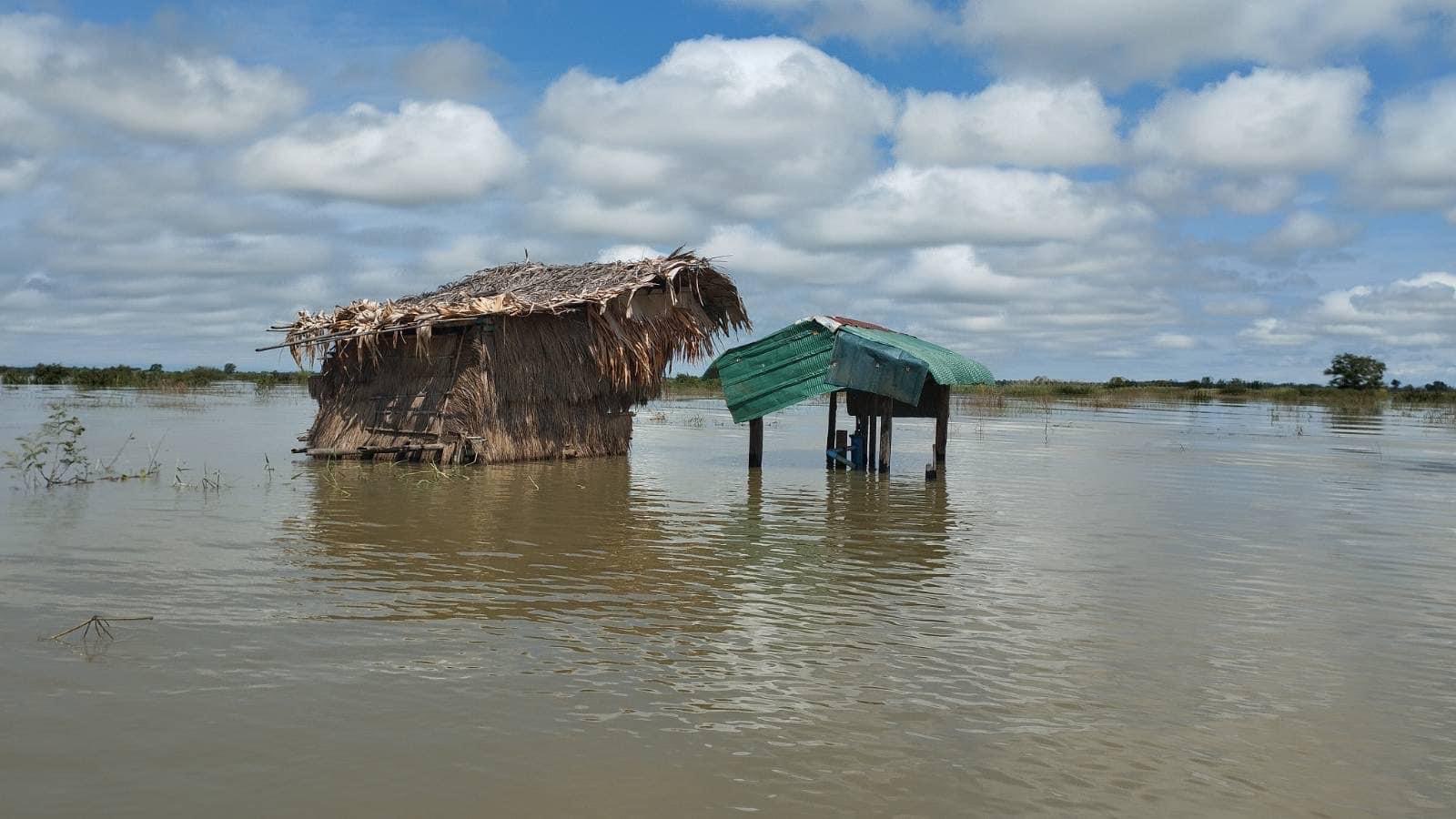
However, farmers in the region say the situation is far worse.
U Myo Min, 56, said he invested more than 10 million kyats (about US$ 19,600) to grow rice on more than 65 acres in Bago Township during the monsoon season.
“When we started growing [rice] at the beginning of the season, we lost some due to the heavy rains but … we expected we could get back at least what we invested. But for now, as all the acres were destroyed, I don’t even have seeds to [plant] next year,” he said.
The dire situation is not limited to Bago Region. Farmers in other regions and states expect the year ahead to see a decline in exports and rise in food insecurity in Myanmar.
In early May, Cyclone Mocha hit Rakhine and Chin states, as well as Sagaing and Magway regions, damaging more than 42,500 acres of paddy fields, according to the figures from the National Unity Government.
Farmers also lost their seeds for next year. The junta, MRF, domestic and international nongovernmental organizations have not been able to effectively distribute seeds to farmers.
Junta boss Min Aung Hlaing said Myanmar has 15 million acres for monsoon rice cultivation and about 3 million for dry season cultivation.
This may be correct, but having fields does not automatically make rice grow.
Farmers say they need loans to grow rice and that the costs of labor, fertilizer and other inputs, including fuel, are rising.
Moreover, as the conflict between the junta’s military and armed resistance groups worsens in regions like Sagaing and Magway, farmers are fleeing their fields instead of growing rice on them.
The ADPC has warned that rice cultivation in Sagaing Region requires particular attention due to intense conflict and a lack of irrigation. Per hectare yields fell from 3.47 to 3.13 tons in the region from 2021 to 2022, it said.
The ADPC analysed the 11 regions and states where rice is grown and found that Myanmar’s total cultivated rice area declined by 7 percent from 2021 to 2022—from over 4,775,000 hectares to 4,421,000 hectares.
That finding is nearly 14 percent lower than the total cultivated area of 5,120,854 hectares reported the General Administration Department under the civilian government in 2020.
The MRF is targeting exports of 2.5 million tons of rice for this fiscal year and says this will generate US$ 1 billion in revenue. It is unclear how it calculated this target.
To control the high rice prices in the domestic market, the junta stopped issuing rice export licenses on September 1 for 45 days, long before the flooding in Bago.
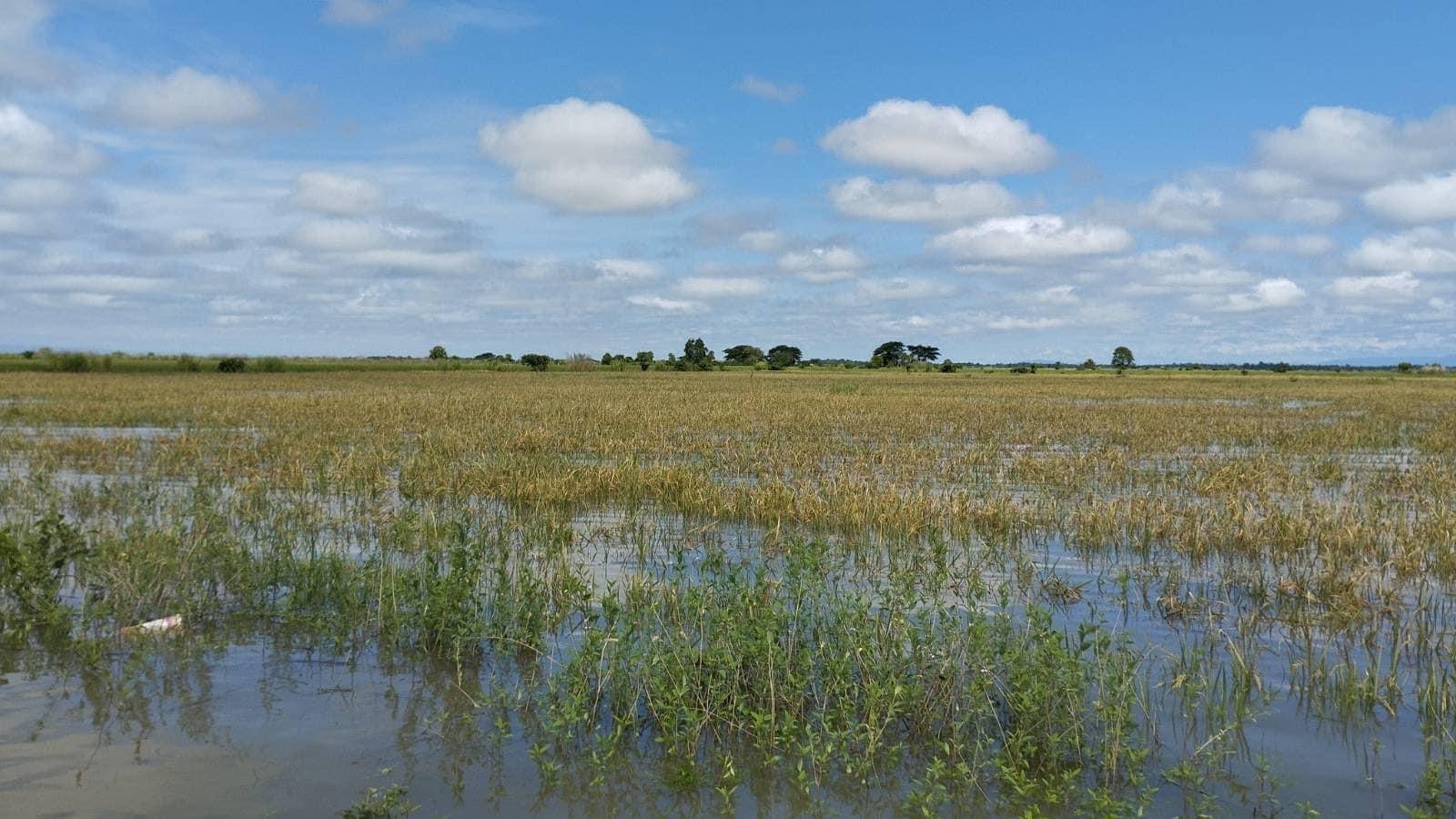
Economist U Moe said rice exports will definitely slump for the rest of the fiscal year, which ends in March. He said this year’s monsoon season rice crop had fallen drastically and accused the junta and its allies of attempting to cover up this reality.
He is most worried about the impact on domestic consumption, saying that prices and food insecurity will rise.
The price of the best type of rice—Special Shwe Bo Paw San—is now over 7,000 kyats per viss (1.3 kilograms). Before the coup it was about 3,000 kyats. Residents of Yangon who could afford this type of rice before the coup are now turning to the lowest quality rice, which now costs what the best type did previously.
“People have been facing higher prices for basic needs, such as rice and edible oil, for daily survival. As farmers have suffered disasters, it means more hardship awaits,” Moe said.
https://www.irrawaddy.com/business/bago-flooding-has-deepened-myanmars-rice-crisis-farmers-say.htmlPublished Date: October 24, 2023






